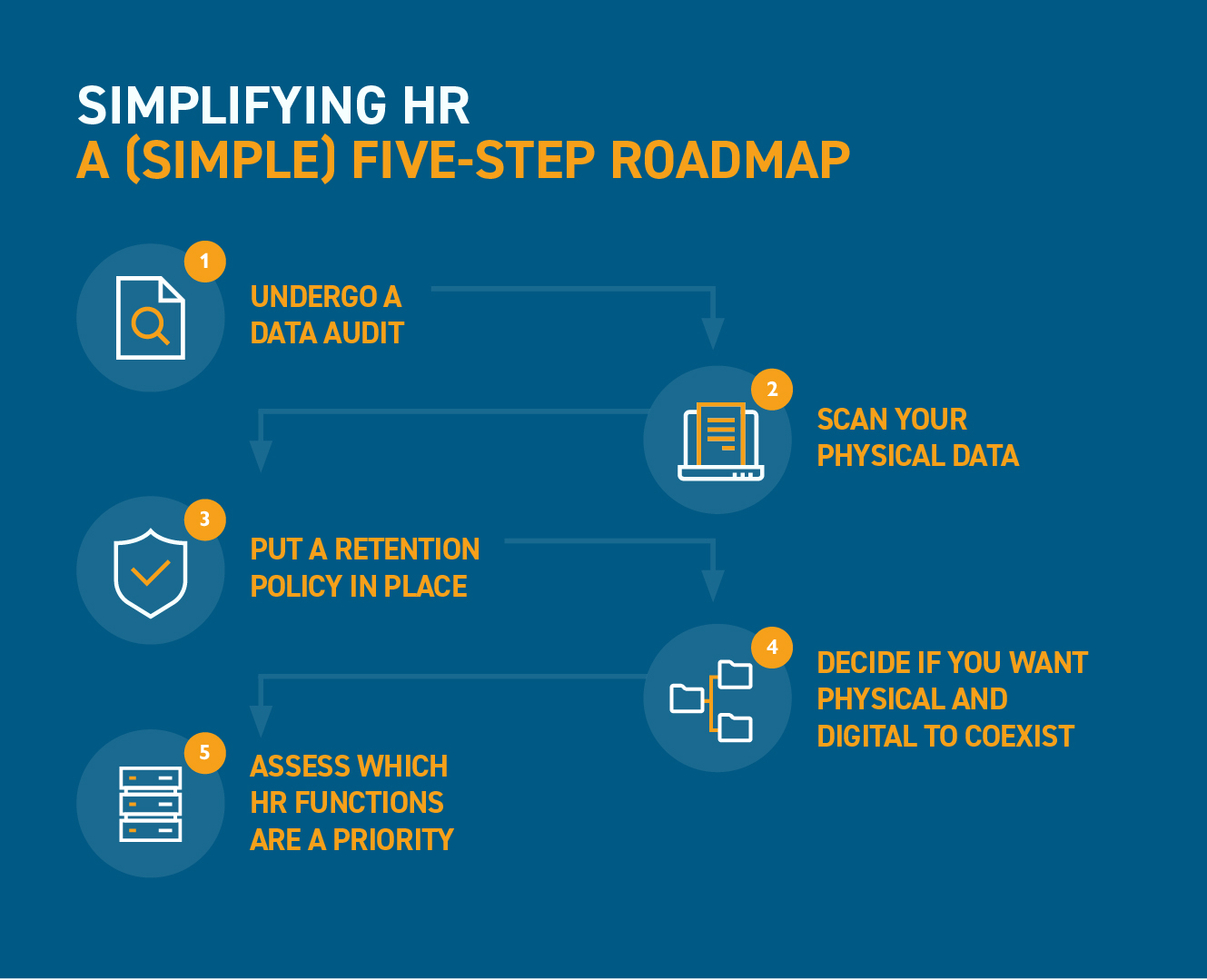In two previous posts, we have already discussed how having an electronic content management system (ECM) in place has the power to transform HR functions, bringing them together under one umbrella and using automation to simplify processes.
But which functions benefit most and where should you start?
Part One of our series looked at the birth of HR data (during recruitment) and the early days of an employee’s job role.
Part Two looked at ‘midlife’ data challenges, such as employee relations, comms and employee benefits.
Now we move on to the final chapter, right up to the day an employee leaves the business.

Performance evaluation and employee records
The business challenge: These records include some of the most sensitive data in the system, including personal employee information which is valuable to cyber criminals and details of disciplinary issues which are legally sensitive.
Businesses need to know how long to keep data from disciplinaries (it may be only six months or a year in some circumstances). But it can be vital data when it comes to an employment tribunal.
The solution: An ECM system can ensure that sensitive disciplinary data is encrypted and secure – and that only the relevant people are granted access to it.
For instance, if an employee had a disciplinary issue within the organization and then moved department, the new manager may not necessarily be entitled to see any previous written or verbal warnings associated with the case.
When it comes to performance evaluation, the system can automatically set up annual reviews and compare data across an employee’s service.
The business benefits: This system removes risk when it comes to compliance and auditing.
Everything is in one place, there are no filing cabinets to go through, no pieces of paper left on somebody’s desk with sensitive information on them.
It is just as relevant for employee performance evaluation as well as discipline. Having data at your fingertips is beneficial for managers when explaining decisions. Employees can be shown on screen how they have achieved performance targets. Or if they are not delivering, help can be provided.
One of the most important factors in HR is who sees what. Not everybody in the business needs to know how much colleagues earn or see disciplinary files.
An ECM system can mask and hide information depending on permissions attached to it.
Leaving the business
The business challenge: Facilitating the departure of an employee involves a lot of data.
Imagine all the data collected around an individual over the course of their business life. Some will need to be kept by law, other files must be destroyed within a certain timeframe.
Ex-employees leave behind computers, laptops and mobile phones packed with sensitive data and it’s a challenge to ensure none of it is compromised. You might also need to consider physical data – on uniforms and ID cards, for instance.
The solution: Automating processes not only saves time but also aids compliance. ECM can assign a retention policy to every bit of data held on an individual and manage the leaving process. It can automatically update reports, cancel benefits such as gym memberships or health insurance. It can even contact customers to let them know their main point of contact is changing.
The business benefits: Many of the tasks described above used to be undertaken manually and took up a lot of time. But with ECM much of it happens instantly and more securely.
Finally, and this is an important aspect, don’t forget to securely destroy any data which you no longer need to keep by law.
Many businesses keep data too long ‘just in case’ it might be needed in future. But if there is no legal requirement to retain it, then secure destruction is best and safest option.
This should include not only include digital data but also data stored on paper. There might be physical items which require destruction, too. Don’t forget that laptops and phones store data.
Even name badges, uniforms and entry key cards can contain sensitive data and should be destroyed.
What is important to remember is that through all life stages of HR data, through its entire lifespan from creating to destruction, digital solutions are there to solve problems and make life simpler.





